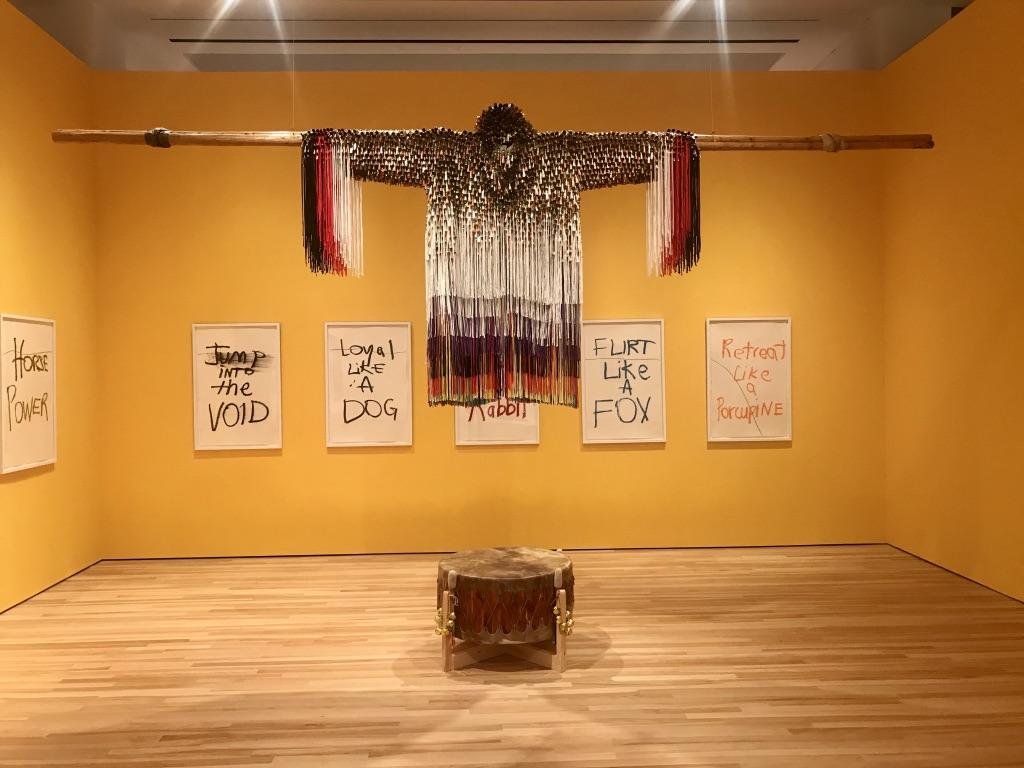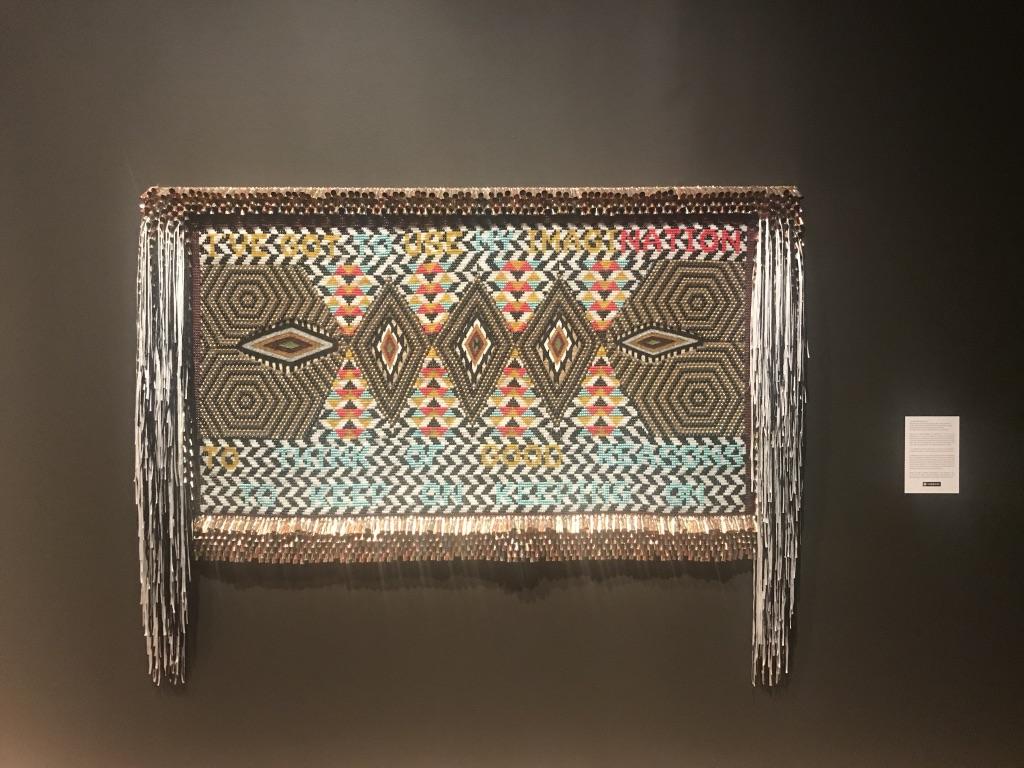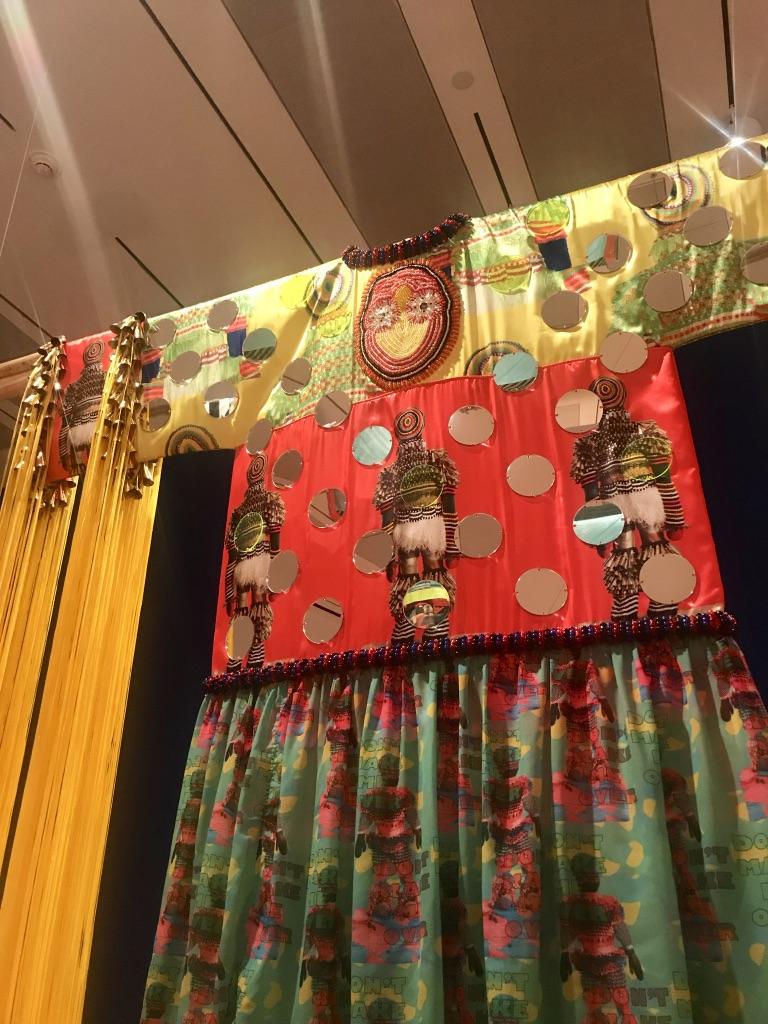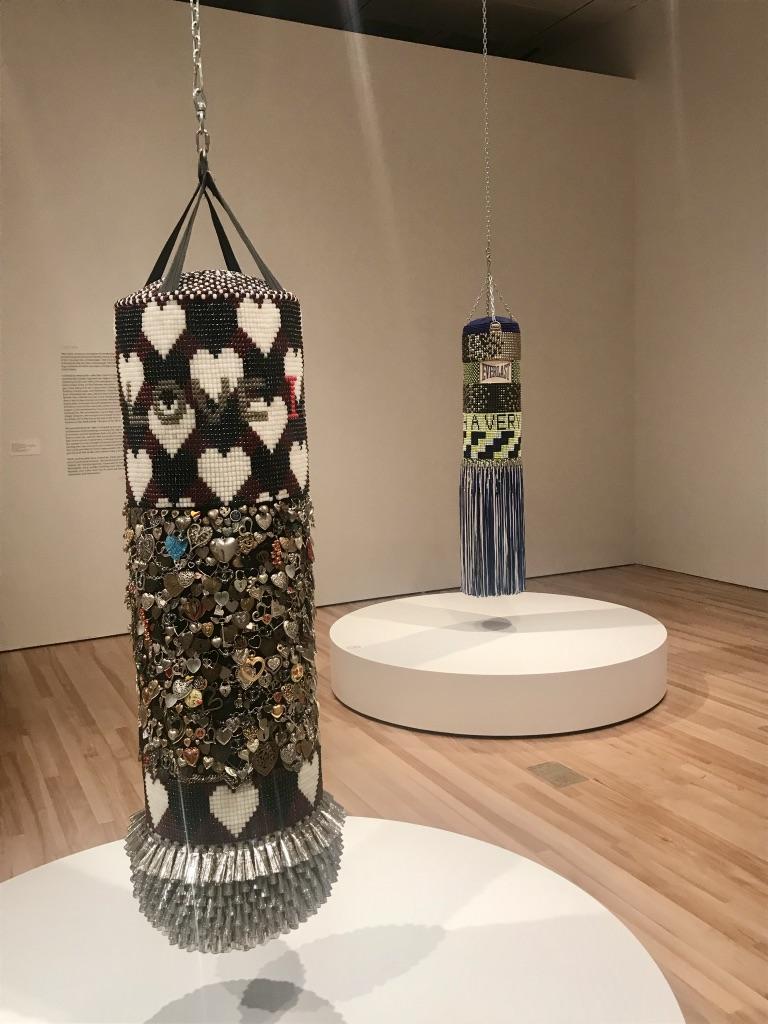“Jeffrey Gibson: This Is The Day” opened to the public on July 14, 2019 bringing a breath of fresh air and a splash of vivid color to the Blanton Museum of Art. The exhibit, which ran at the Blanton until Sept. 29, is centered on the exploration of identity, gender, sexuality and religion through the cultural lens of Gibson’s own Cherokee and Choctaw background.
Story by Imani Sebri
Photos by Imani Sebri
The exhibit is full of vivacious pieces that speak not only to the richness of indigenous art but also to the “unexpected parallels between Native American pow wow rituals, dance clubs, drag shows and cultural phenomena such as fashion shows,” curator Tracy L. Adler wrote in an introduction to the exhibit. .
By drawing these connections, Gibson is able to incorporate the likes of Boy George, Beyoncé and Grace Jones.
Gibson’s reverence for indigenous techniques is apparent upon entering the first room. Kaleidoscope-esque beaded works of art adorn black walls, and straight ahead is the shining piece “ALIVE!” that reaffirms what Indigenous people have always known: they are alive and present. To the right, hangs “To My Nation” (2017) where Gibson explores the idea of nationhood and identity through an intricately woven work embroidered with the words from a Gladys Knight song.
“I choose to use beadwork because it is recognizable as a Native American process…it establishes the lens through which I want viewers to consider my patterns and choice of words,” Gibson wrote about in an excerpt about the exhibit.
Gibson’s garments hang, god-like, in the main room, examine identity, representation and self-preservation.
“I rarely see my body represented in popular culture,” Gibson wrote.. “But my practice is where I call the shots, and I am trying to make the world I envision.”
Through these “ghost shirts,” Gibson reclaims the narrative of what it means to be an indigenous person and how to navigate the world as such. . This is where Gibson derives his subversive power from. He demands to be acknowledged, celebrated and allowed the room to grow in a world that is not accommodating.
The exhibit also features a short film titled “I Was Here” that further explores intersectional identities. It follows a Choctaw trans woman navigating life in rural Mississippi.
“The video continues my interest in broadening and complicating perceptions of identity,” Gibson wrote.
As a gay man, Gibson highlights the different components of oppression that he and Macy, the subject of the film, face on a daily basis.
“[Macy’s] existence…requires a great deal of strength and determination,” Gibson wrote.
“I Was Here” depicts Macy’s everyday life: from getting dressed for work at a tribal casino to more mystic scenes of her walking through the lush, green Mississippi woods.
Gibson’s punching bag pieces are a tangible depiction of his struggles as both an artist and an individual. These punching bags illustrate the blending of traditional therapy, indigenous practices and rituals as a form of therapy. Gibson was introduced to punching bags as a way to channel his anger deliberately, he said. At the same time, he traveled and talked with other Native American artists who said beading, dancing and drumming saved them from the clutches of drugs and alcohol.
“This Is The Day” is an exhibit that does not hesitate to address emotions, from excitement to the sorrow of life.
“I love how every piece has so much thought and emotion behind it,” marketing senior Omama Qureshi said. “There is rhyme and reason for everything. Art is an amazing form of self-expression but it will always be a struggle.”
The exhibit concludes with a painting that reads “I Know You Have A Lot of Strength Left” in the midst of black, gold, copper and silver metal tacks. And that’s the spirit of Jeffrey Gibson’s show. It exudes strength, resilience and is a celebration of indigenous life and arts.
















































Sammy • Oct 1, 2019 at 5:36 pm
Just wow, fantastic work Ms. Sebri!